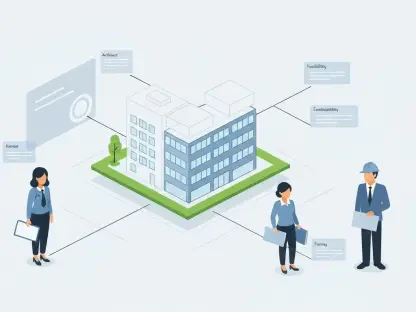Luca Calaraili has long been at the forefront of the construction industry, blending architectural insight with technological advancements to push the boundaries of innovation. Today, we delve into the revolutionary impact that SnapInspect’s AI-powered property inspection software is having on multifamily and commercial real estate, transforming workflows and enhancing efficiency in unprecedented ways.
What inspired SnapInspect to integrate AI capabilities into its property inspection software?
The inspiration came from the industry’s growing demand for smarter, not just faster, inspections. We wanted to empower property managers to look beyond the traditional methods, using AI to create more intelligent systems that streamline tasks, surface intricate patterns within inspection data, and offer better control over large-scale operations.
Can you explain how AI enhances the speed, accuracy, and intelligence of property inspections?
AI accelerates inspections by automating routine processes, enabling faster data entry and analysis. It also enhances accuracy by minimizing human error and provides intelligent insights through data pattern recognition, allowing our users to focus on making informed decisions based on accurate, comprehensive data.
What repetitive tasks does the AI aim to eliminate, and how does it surface patterns in inspection data?
AI targets tasks like data entry and sorting, which can be time-consuming and error-prone without automation. By analyzing large sets of inspection data, AI identifies trends and patterns that might not be obvious to human inspectors. This capability allows managers to anticipate issues before they arise.
How does AI-assisted report generation work, and in what ways does it reduce human error?
AI-assisted report generation compiles inspection data into organized, easily digestible reports, ensuring consistency and accuracy across documentation. By automating report generation, we eliminate inconsistencies and errors typically associated with manual documentation processes, thus improving reliability.
What is “predictive issue tagging,” and how does it help in identifying maintenance risks?
Predictive issue tagging is a feature where AI flags potential problems before they become serious issues. By analyzing historical data and detecting anomalies or patterns, it allows property managers to proactively address maintenance risks, thus avoiding costly repairs and downtime.
How does smart photo sorting and annotation accelerate workflows?
This feature automatically categorizes photos based on relevance and frequently used tags, streamlining the documentation process. By doing this, it reduces the time spent manually reviewing and sorting images, allowing property managers to quickly find necessary evidence and proceed with maintenance or reporting tasks.
Can you discuss the importance of customization in SnapInspect’s software for multifamily and commercial real estate?
Customization is crucial because it allows property managers to tailor the software to their specific operational needs. Every property is unique, and having a personalized system means they can adapt our solutions to fit their portfolio and management style, boosting efficiency and satisfaction.
How does SnapInspect’s software address the specific needs of Homeowners Associations (HOA) communities?
For HOA communities, the software offers features tailored to communal living management. This includes streamlined communication channels, shared resource tracking, and specific tools catered to handling varied stakeholders, ensuring community standards are maintained efficiently.
What features make SnapInspect a user-friendly property inspection app?
User-friendliness comes from an intuitive interface, access to customizable tools, and streamlined processes that reduce complexity. The app simplifies multiple procedures into a cohesive workflow, making it accessible to all users regardless of their technological proficiency.
Can you elaborate on the offline capabilities designed for field teams?
Our offline capabilities mean field teams can input data and conduct inspections without needing a constant internet connection. This allows for more flexible and reliable operations in areas with poor connectivity, ensuring that data collection isn’t hindered and inspections remain on schedule.
How does the software facilitate seamless work order creation and tracking?
The software supports seamless work order creation by integrating it directly into the inspection process. Once an issue is identified, work orders can be generated instantly and tracked within the system. This reduces lag times between identification and resolution, ensuring efficient maintenance.
Could you describe the role-based access controls and how they benefit teams and vendors?
Role-based access controls tailor user permissions based on their role, ensuring that everyone gets the access they need without compromising sensitive information. This structure fosters secure communication and collaboration between teams and external vendors by maintaining appropriate boundaries.
How does SnapInspect ensure enterprise readiness through integrations and API access?
We provide robust API access and integrate seamlessly with other enterprise systems, ensuring data flows smoothly between platforms. This readiness allows businesses to expand and connect various tools without friction, enhancing operational continuity and scaling potential.
What type of historical data trends can users track, and how do these trends assist in asset performance evaluation?
Users can track tendencies such as maintenance frequency, repair costs, and asset condition over time. By evaluating these trends, property managers gain invaluable insights into performance metrics, enabling them to make proactive decisions regarding asset management and resource allocation.
Can you describe the functionality of real-time maintenance dashboards and their impact on portfolio-wide visibility?
Real-time maintenance dashboards provide managers with up-to-date insights across their entire portfolio. This functionality allows them to monitor the status of multiple assets simultaneously, enhance decision-making with immediate data access, and ensure transparency in management oversight.
How does SnapInspect maintain operational visibility and compliance through its software solutions?
We maintain operational visibility and compliance by providing detailed analytics, audit trails, and automated compliance checks. This ensures that managers are always informed about the current state of operations and potential compliance risks, allowing them to act swiftly and maintain standards.
Do you have any advice for our readers?
Embrace technology, and don’t be afraid to experiment with new tools that can elevate your operational efficiency. Stay informed on industry trends and innovations, and remember that adaptability is key in meeting the evolving demands of property management.









